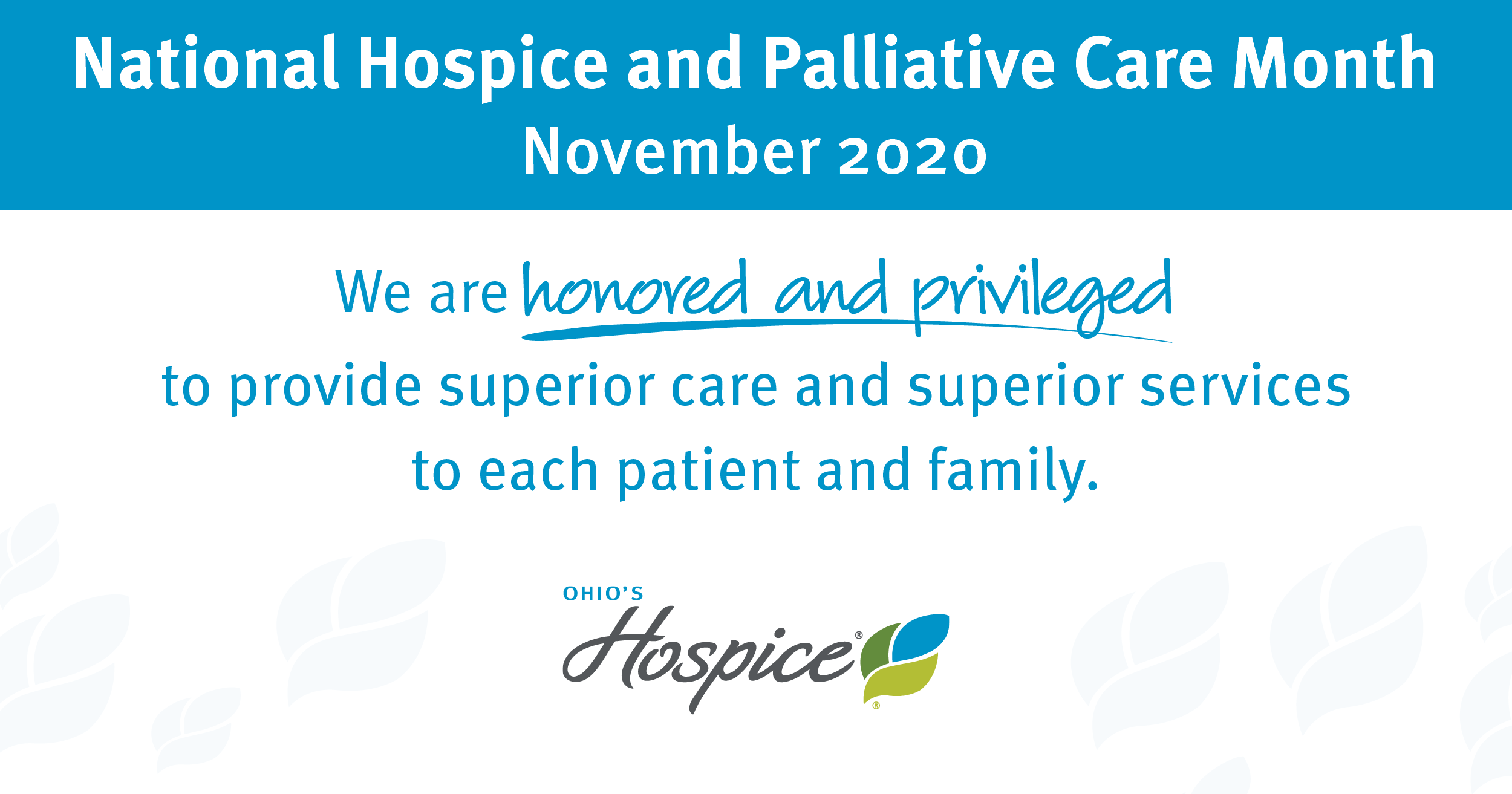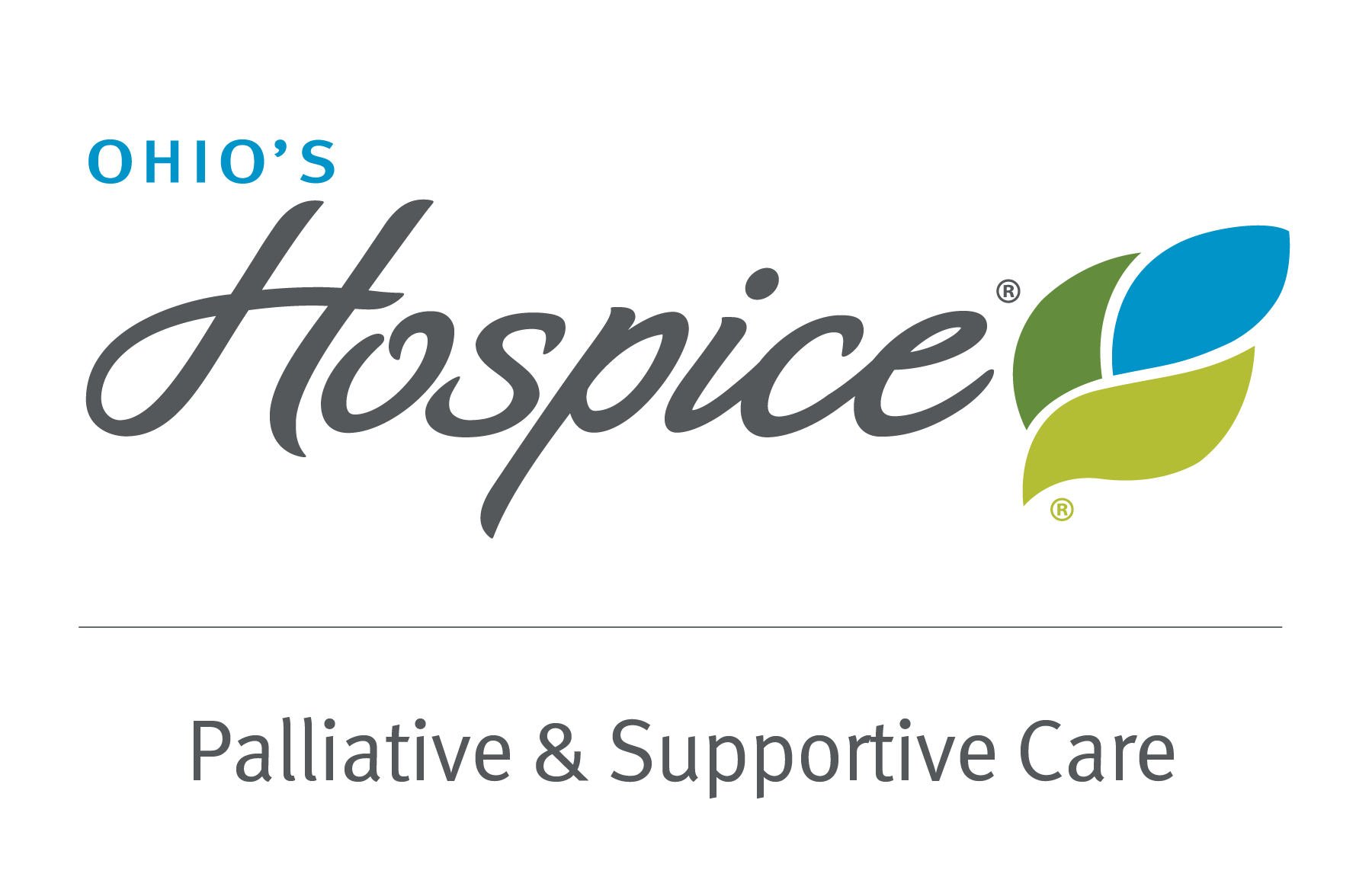
National Hospice and Palliative Care Month: What is Hospice Care?
During the month of November, Ohio’s Hospice and its affiliates are observing National Hospice and Palliative Care Month. Throughout the month, we will share information about hospice care and how it could benefit you and your loved ones.
The History of Hospice Care
The founder of the modern hospice movement, Dame Cicely Saunders, MD, changed the way the medical community approached death and dying. Through her research, she determined the main components of providing compassionate, end-of-life care included patient-centered, whole-person care, physician-patient communication, staff and provider education, and evidence-based research.
Following Saunders’ model, through its affiliates, Ohio’s Hospice offers patients and families expert medical care, pain management, and emotional and spiritual support. Our care team includes, among others, physicians, nurses, personal care specialists, psychologists, pharmacists, chaplains, bereavement counseling professionals, social workers, and volunteers to address the individual needs of each patient and family.
About Our Care
At Ohio’s Hospice, our mission is to celebrate the lives of those we have the privilege of serving by providing superior care and superior services to each patient and family.
Hospice care is compassionate care for people facing life-limiting illness or injury. Hospice care involves a team-oriented approach to expert medical care, pain management and emotional and spiritual support tailored to a patient’s needs.
Hospice patients benefit from a team of caregivers who help the patient choose the care they want. Family members are involved in patient care and decision-making. The hospice team supports both patients and families so that the patient’s choices are honored.
The hospice team provides care in the comfort of the patient’s home, extended care facility or assisted living center. Patients also can receive care in a hospital or one of our Hospice Houses.
Our four levels of hospice care include:
- Routine Care: Patients receive hospice services in the setting they call home.
- Crisis Care: Patients receive care on short-term continuous basis in order to monitor and manage uncontrolled symptoms.
- General Inpatient Care: Patients receive care on a short-term basis in an inpatient facility to help relieve uncontrolled symptoms.
- Respite Care: Patients receive care in a facility on short-term basis, up to five days, to provide relief for the caregiver.
What Is the Cost of Hospice Care?
Services, medications, supplies and equipment related to a patient’s illness are covered under the Medicare or Medicaid Hospice Benefit and most private insurances, resulting in little to no cost to the patient for hospice care.
With the rising costs of healthcare associated with the end of life and the elderly population in the U.S. expected to increase to more than 70 million by 2030, there has been a rising number of for-profit hospices. It is important that not-for-profit hospices remain available to patients and families, as their focus is providing superior care to patients based on Saunders’ model as opposed to profits.
Because we are a not-for-profit hospice, Ohio’s Hospice affiliates provide care regardless of a patient’s ability to pay. Patients benefit from an array of complementary and innovative therapies and continue treatments that provide comfort. Those costs are covered as well.
How Do I Know if Hospice and Palliative Care is Right for Me?
For more information about hospice care, please contact your local Ohio’s Hospice affiliate.
Ohio’s Community Mercy Hospice
Ohio’s Hospice of Butler & Warren Counties

